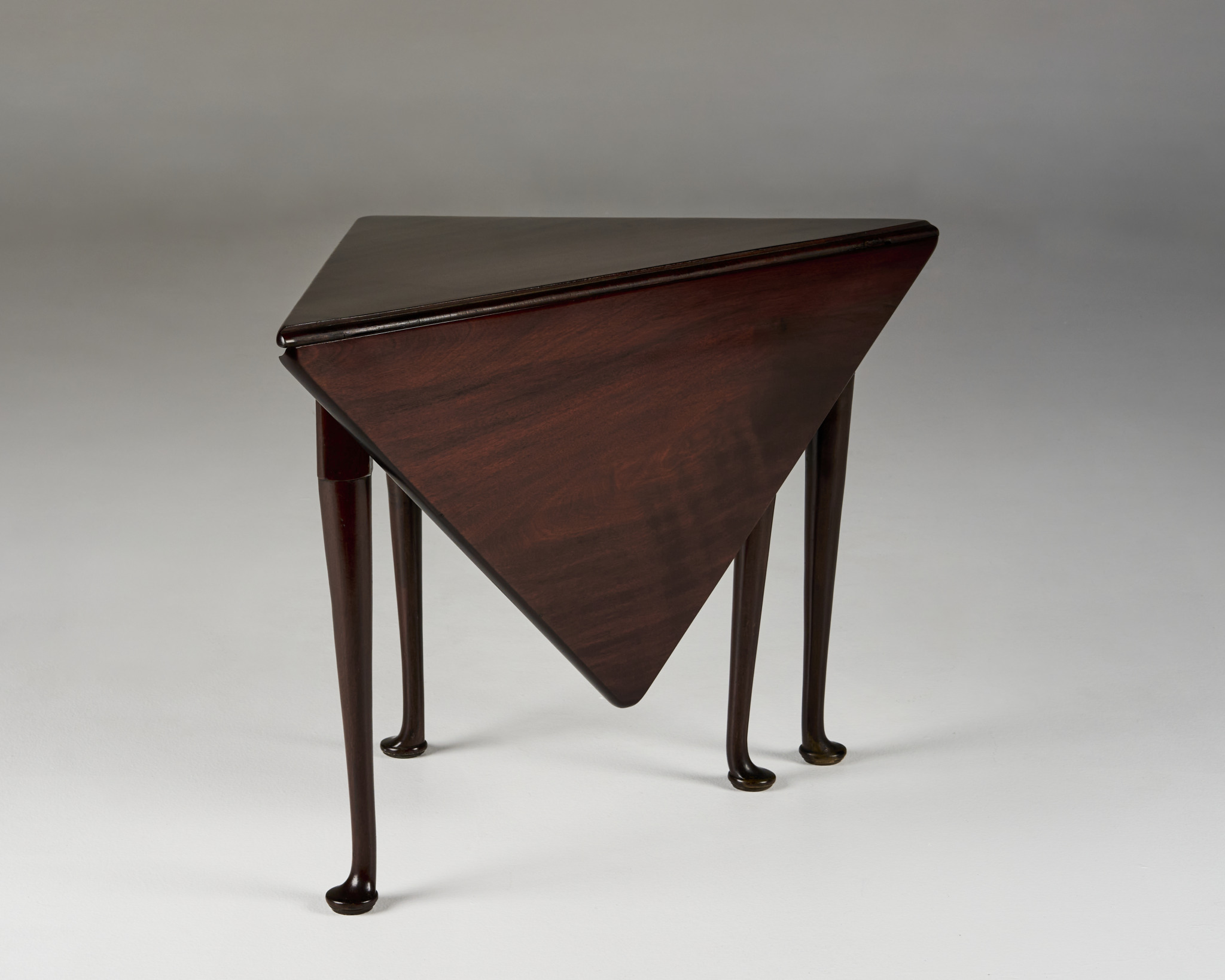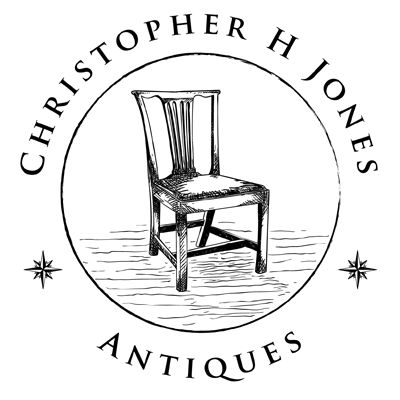Corner Table
Mahogany
Yellow Pine and Atlantic White Cedar Secondary
Tidewater Virginia, Probably Norfolk
Circa 1765-1780
H 27.5”, D 20” (closed), W 40” (closed), W 29” x 29” (open)
The high level of craftsmanship displayed in the construction, proportions and details of this fine corner table evidence the skill and training of the unknown artisan who built it. Based on the secondary woods and stylistic details, it was the product of a shop in the Virginia tidewater and the work of a cabinetmaker trained in a British urban center, probably London. A number of construction details support this conclusion: the difficult but skillfully executed corners of the triangular base, the neatly managed transition square to round and chamfered edges of the legs, the inclusion of a “hidden” compartment beneath the top, choice mahogany as the primary wood and the “pinked” surface of the sub-framing are all evidence of English shop practices. Skilled artisan immigrants often found employment in Williamsburg or Norfolk, the two coastal southern cabinetmaking centers in Virginia in the last third of the 18th century to which this table dates. When compared to examples attributed to Williamsburg’s Hay shop, this corner table is of considerably finer workmanship and can be attributed with confidence to Norfolk. The secondary woods, yellow pine and Atlantic white cedar, also confirm eastern Virginia origins. Norfolk flourished as a cabinetmaking center until the disastrous fires and destruction early in the American Revolution which destroyed much of the city and dispersed its residents across the tidewater region.
“Corner tables are extremely rare today and apparently were never common” observed Winterthur Curator Charles Montgomery and this is especially true of southern examples of this highly desirable form. [i] Originating in Great Britain, and also known as breakfast or handkerchief tables, their practical design allowed the table to be moved about with relative ease or tucked away when not in use. The frequency with which they were moved and use of dense, heavy mahogany in their construction which contributed to damage to the legs, frames and hinges very likely resulted in their low rate of survival.
CONDITION: Robert Beverley of Blandfield plantation in Essex County was so distressed at the deterioration of his mahogany furniture that he directed his English factor that “the furniture they may be neat + plans as possible…the mahogany of the light Jamaica kind. The other woods being so heavy as to be destroyed by their own weight.”[ii]An approximately 2” strip of the drop leaf and resulting losses at the rule joint and corners damaged due to the hinge screws having split out and reset has been replaced. The original hinges have been returned to their original positions and the mortises repaired (but left visible on the underside as a record of the repair). The finish was blended to match the dark old finish surviving on large portions of the frame and legs.
POR
[i] John Bivins also notes the rarity of the form in North Carolina and, with Brad Rauschenberg, comments on their extreme scarcity in Charleston, SC. Hurst and Prown note that the lower Chesapeake is the only area of the south in which corner tables appear with any (relative) frequency.
[ii] Robert Beverley to Samuel Athawes June 1772.


